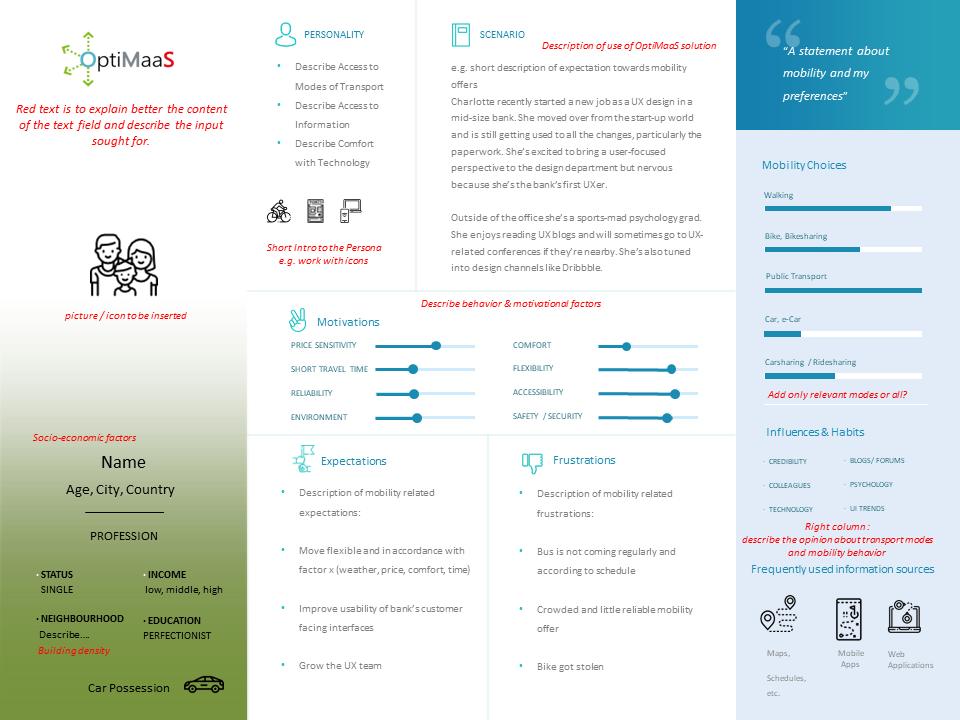Working with personas in OptiMaaS
In order to guarantee a target group-oriented development of the frontend design, there are several methodological approaches. In OptiMaaS, we worked with so-called personas. These simulate or stereotype the future user of the apps and services developed in OptiMaaS. The persona ensures that the development of the OptiMaaS solution considers the users’ voices accordingly, addresses their needs and considers their pre-conditions. A missing consideration might lead to and create risks of failure in the design and implementation process itself.
Based on archetypal models of the people (a stereotype), the different characteristics of a persona have been elaborated in several group workshops. The focus was the designing of the user persona based on the stereotype, but drawing out details of context, behavior, need, etc. More than that, the OptiMaaS personas cover all relevant age groups, socio-economic groups and, of course, user behaviors in the mobility context. The only pre-defined parameter was the type of urban area, since the project focuses on the urban periphery, and all users live and potentially work or go to school and/or spend their free time in the urban periphery.
The description of the OptiMaaS personas contains detailed information about lifestyle and values, living environment as well as mobility-related information and expectations. An important description for the further work with personas is the description of their usual mobility behaviour and their mobility choice.

The users’ mobility behavior includes the available permissions (age limit for driver license, licenses), number of available cars per household, the preferred mode of mobility and the given/bought access to transport (such as tickets).
All (theoretically) available mobility modes are listed, including Walking, Bike, Bike sharing, e-Kickboards, Scooter/ Moped, Public Transport, Car/ e-Car: driver or passenger, OnDemand (Cab, Uber, etc.), Carsharing, Ridesharing (e.g. blabla car) and show the degree of importance for the persona. The description of mobility choice is being displayed by degree of agreement: the ranking ranges from 1 (lowest) to 5 (highest). A 0 equals „no access“, e.g. for Ivo who cannot use the carsharing because he doesn’t have a driver’s license.
The results comprise the summary and considerations for the backend as well as for front end-design and basic insights on how to set up and, very generally, how to conceptualize a platform-based MaaS solution or service.